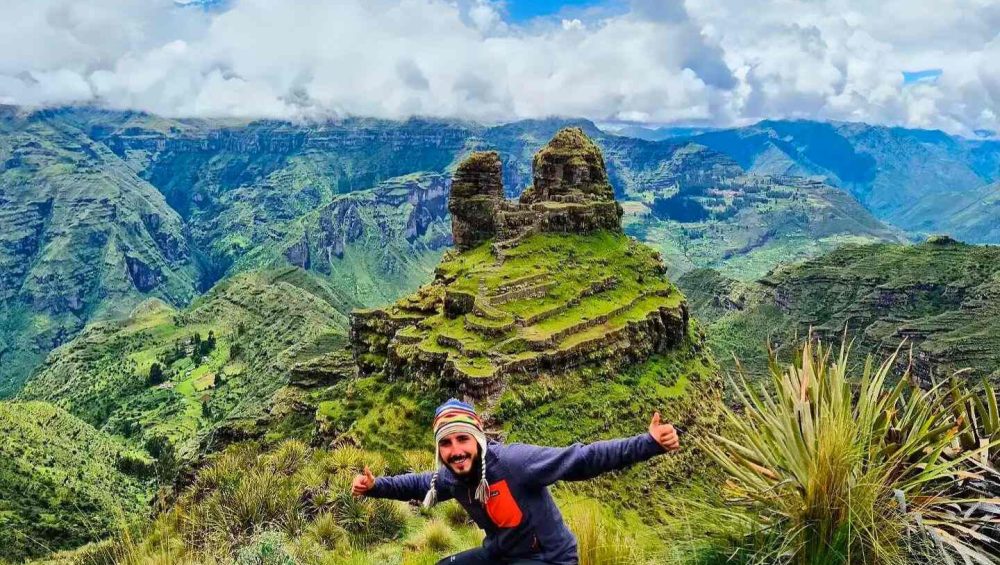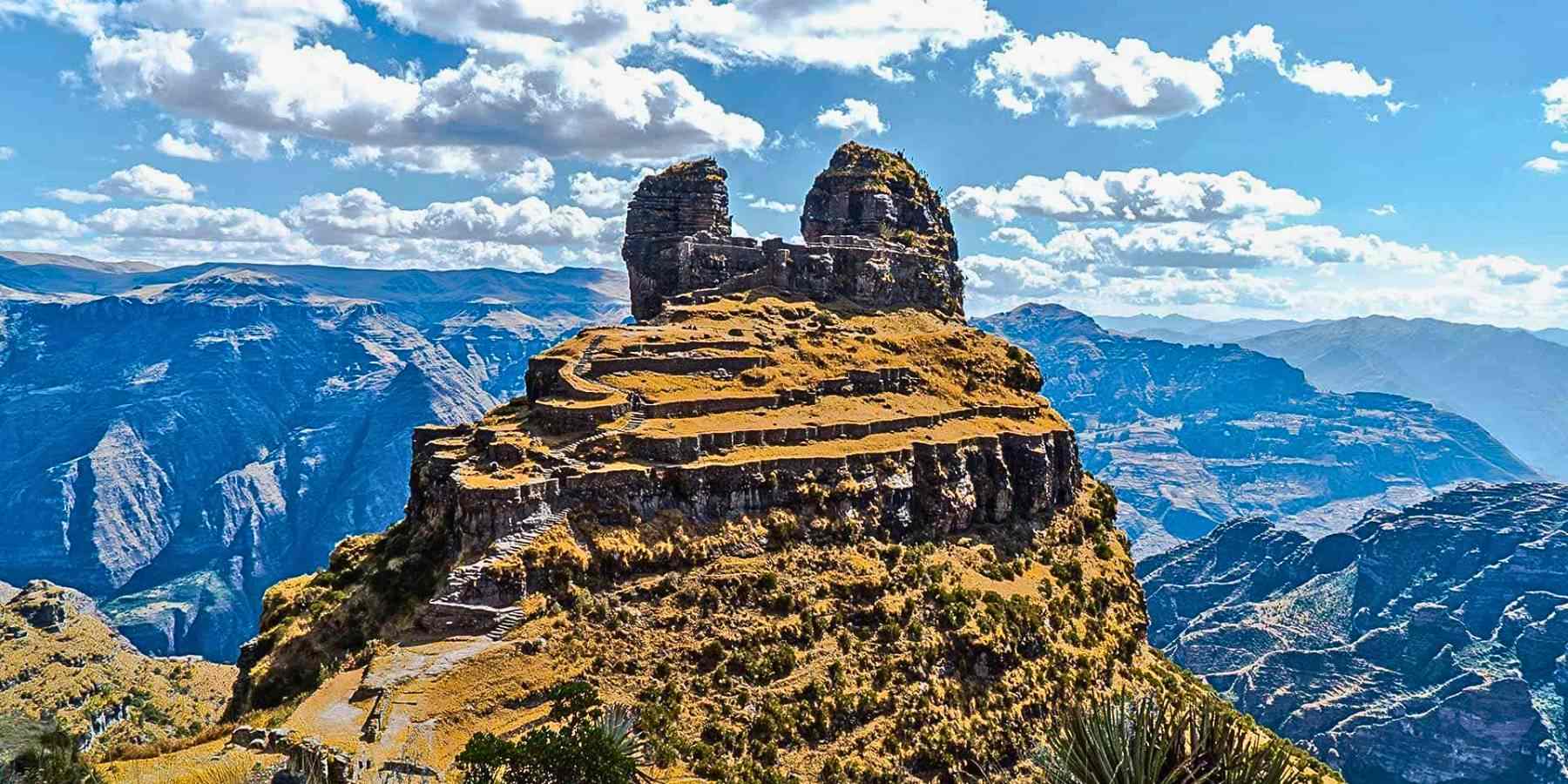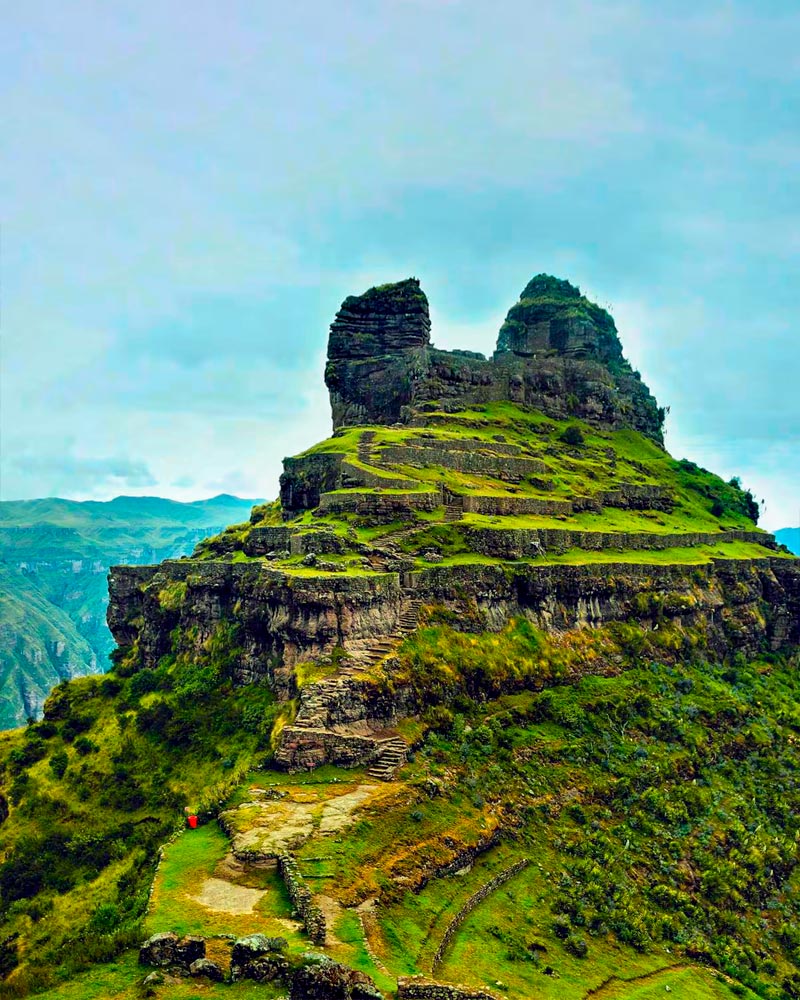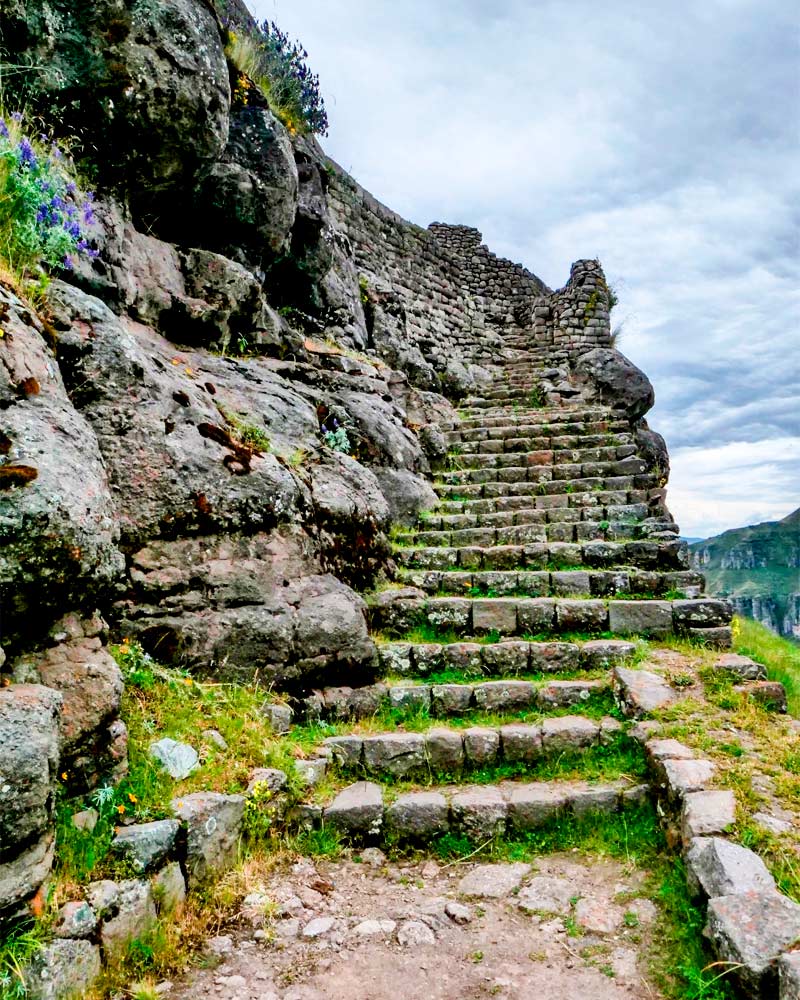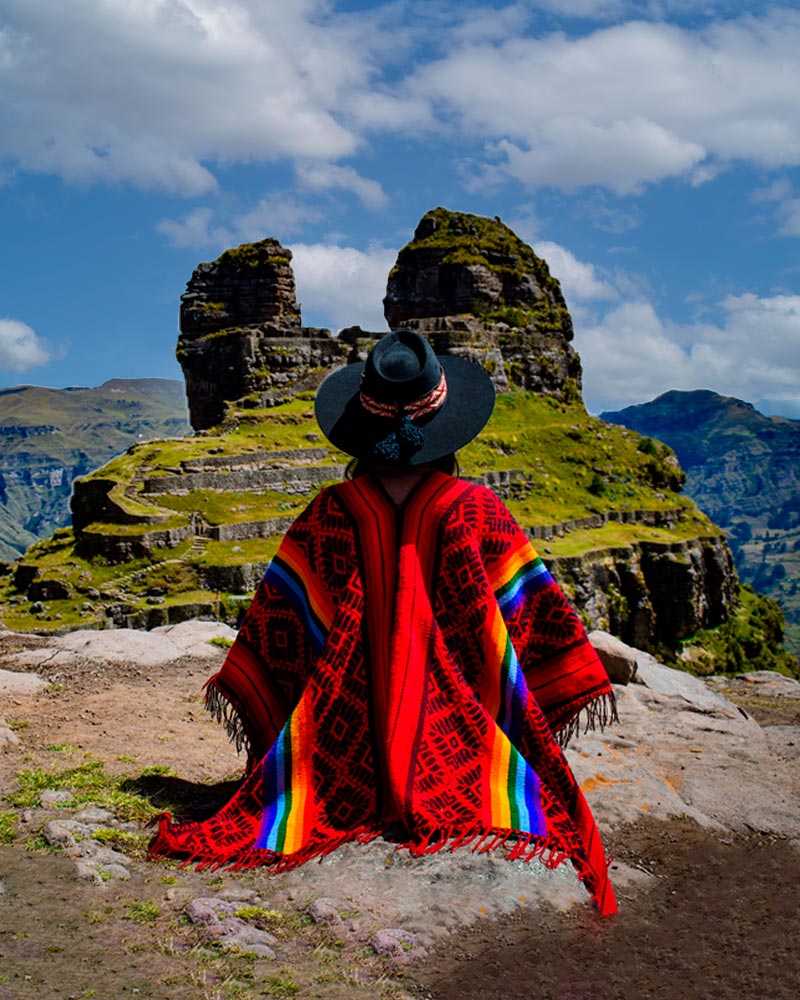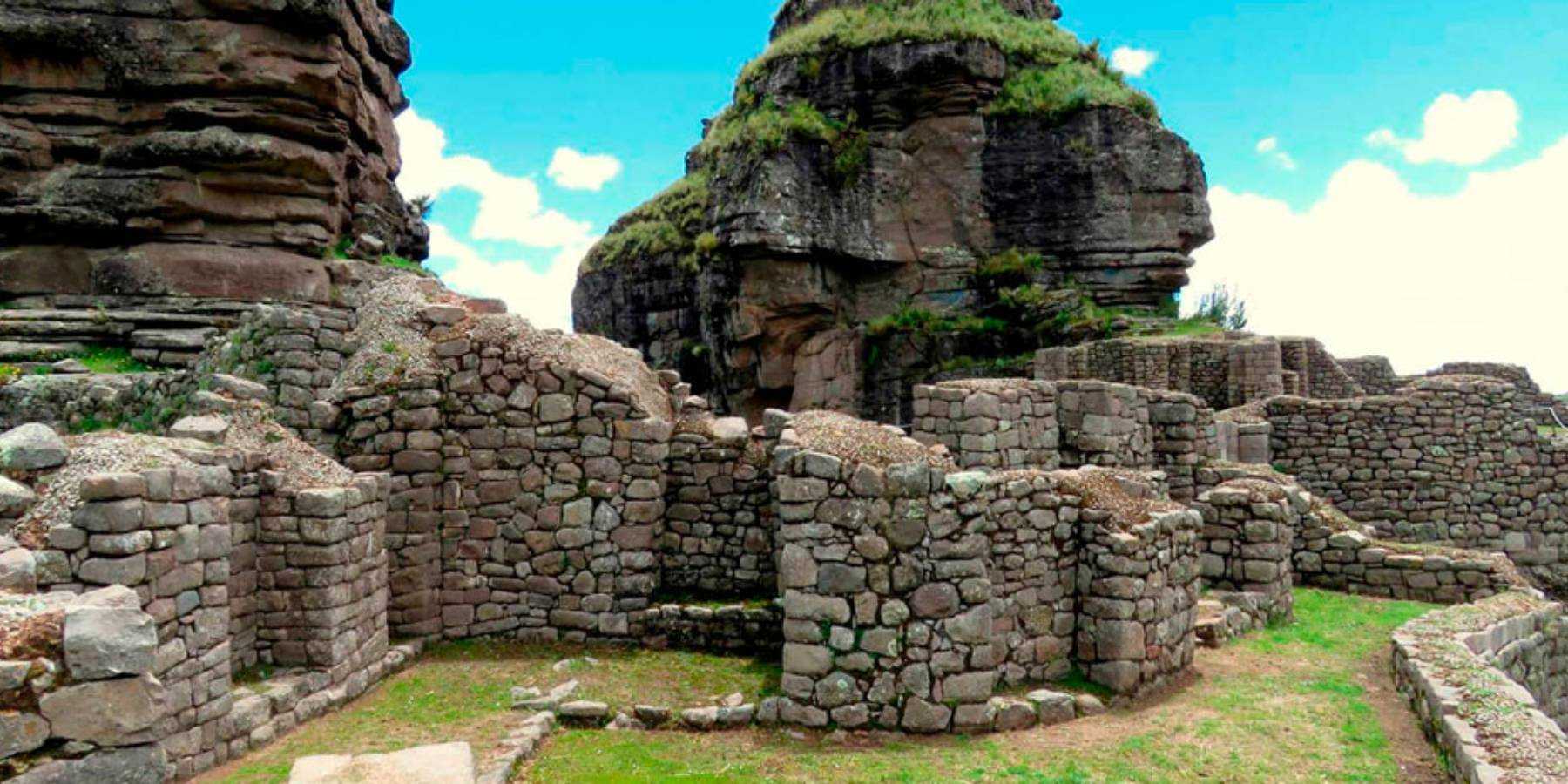High in the mountains of southern Peru, among views and skies that reach about 14,100 feet high, stands Waqrapukara. It is an old and special place, not known by many but just as amazing as Machu Picchu. Its name, which means “fort with horns” in Quechua, perfectly tells about the strange shape of its buildings. They look like they come out of the cliffs as if they were part of the land itself. This interesting place not only charms with its beauty but also with the mystery around where it came from, what it was used for, and what it meant in the Andean world.
In this blog, we will look closely at what Waqrapukara is, where it came from before the Incas, what its strange name means, and why it was important for ceremonies and war in the past. We will also tell you exactly where it is, the ways you can get there, and how hard the trip is. Lastly, we will share helpful tips so your visit is safe, fun, and teaches you a lot, from what to pack in your bag to the best time of year to go on this adventure. Get ready to find a place full of history and nature deep in the heart of the Andes.
About the Inca fort with Horns
What is Waqrapukara?
Waqrapukara is an old place built on the high rocks in the Acomayo area of Cusco. It is a very impressive building from the Andes mountains that mixes how it was built with the steep land. The building has walls, steps, rooms, and places to look out, all made of stone. It is in a smart spot on top of a rocky hill that looks over the Apurímac canyon. How well it fits with the land around it and how far away it is make it feel special and mysterious.
Before the Incas
Even though the Incas later used and changed Waqrapukara, it was first built by the Qanchis people. These were people from the Andes who lived in the area before the Inca empire grew. The Qanchis might have built the first homes and holy places there as part of their group of special places. When the Incas came, they made the place bigger and changed it a bit.
But they kept many of the first buildings and added better ways of building that the Inca empire used. Because of this mix of cultures, Waqrapukara is a special place that shows how one group of people changed into another.
Meaning of the name: “Fortress with horns”
The name Waqrapukara comes from Quechua: waqra means “horn” and pukara means “fortress” or “strong place.” This name directly refers to the special shape of the rocks around the site. These rocks look like big horns sticking out from the deep cliff. This strong image not only gave it its name but also makes its symbolic meaning stronger. In the Andean culture, natural things were seen as holy. So, it’s likely that these rock shapes were seen as signs of protecting beings or spirit guardians of the place.
Ceremonial and strategic use in the past
Waqrapukara had two main uses: it was a place for ceremonies and also a strategic spot. Its location helped control who could enter the Apurímac valley, which made it important for military reasons during land fights. At the same time, things like altars, niches, and platforms have been found.
These suggest that religious rituals were done there for gods, especially the sun god (Inti) and the mountains (apus). Its isolated location, height, and difficult access not only helped protect the place but also made it a spiritual place for important religious and political people of the Andean world to visit.
Location and How to Get to Waqrapukara
Where is it located?
Waqrapukara is in the Acomayo province, in the Cusco region, in the south of Peru. It is more than 4,300 meters above sea level, in a mountain area that looks over the Apurímac River canyon. Its location on top of a rocky hill makes it invisible from far away, which helped protect it naturally over the centuries.
The site belongs to the Acos district, and even though it is not as well-known as other archaeological places in Cusco, its beautiful scenery and mystery make it a hidden gem worth discovering.
Access Routes: Hikes and tour options
There are different ways to reach Waqrapukara, each one for different tastes and fitness levels. The most direct and popular route starts from the pretty town of Pomarongo, three hours by car from Cusco. From there, a trail of about 6 km, well-marked and with constant views of the Apurímac canyon, leads to the fortress in about 2–3 hours. It is ideal for those who have limited time and want a walk that is exciting but easy to do.
For those looking for a bigger challenge and more varied scenery, the path that starts from Santa Lucía is 8–10 km long, going through queñual forests and viewpoints. With steeper climbs, it takes about 4–5 hours in total and requires good physical fitness.
If you prefer not to worry about the details, organized tours from Cusco are a great option. These one-day packages include transportation, a guide who speaks two languages, a packed lunch, and basic equipment (walking sticks, first-aid kit), offering comfort and safety in exchange for a set pace and schedule. Below, we share the exact details of each of the options to get to Waqrapukara:
Route from Pomarongo
- Start: Town of Pomarongo (3 hours by car from Cusco).
- Walk: Trail of 6 km (one way), mostly going up.
- Estimated time: 2–3 hours of walking.
- What it’s like: Path that is easy to see, with parts of grassy land and views of the canyon. Good for people who don’t have much time and want a route that goes straight there.
Route from Santa Lucía
- Start: Community of Santa Lucía (2.5 hours by car from Cusco).
- Walk: 8–10 km round trip, with some ups and downs.
- Estimated time: 4–5 hours total.
- What it’s like: More different scenery, going through queñual forests and natural viewpoints. You need to be in better shape for this one.
Route from Huayqui (Wayki)
- Start: Small village of Huayqui (about 3.5 hours from Cusco).
- Walk: 12 km (one way), goes through valleys and farming areas.
- Estimated time: 5–6 hours of walking.
- What it’s like: More quiet and not many people go there, good for people who want peace and to be very close to nature.
Organized Tours from Cusco
- How long: 1 day trip (about 12 hours including rides).
- What’s included: Transportation, guide who speaks two languages, food, basic gear (walking sticks, first-aid kit).
- Good things: Easy, safe, and you learn from locals.
- Bad things: You can’t change the times or how fast you walk as easily.
Difficulty level and duration of the trip
How hard it is to get to Waqrapukara depends on the path you pick and how used you are to the high place. Usually, the short paths (from Pomarongo) are not too hard: gentle hills, paths in good shape, and it takes about 4–5 hours total (to go and come back). But, being so high up (4,300 meters above sea level) can make you feel sick, so it’s a good idea to have spent at least two days in Cusco Peru before you walk.
The paths that start from Santa Lucía or Huayqui are harder, with very steep parts and the height changing a lot. You need to be in good shape, have walked for more than four hours before, and it helps to use walking sticks to make your knees feel better when you go down. The weather in the Cusco area can be very sunny, windy, and it might rain suddenly, so you need to be ready for anything. That’s why it’s important to wear layers of clothes and use sunscreen.
| Route | Distance | Estimated Time |
Difficulty | Key Requirements |
| Pomarongo | 6 km | 4–5 h | Low – Moderate |
Minimum acclimatization, trekking shoes |
| Santa Lucía | 8–10 km | 5–6 h | Moderate – High |
Physical endurance, trekking poles, good hydration |
| Huayqui (Wayki) |
12 km | 6–7 h | High | High mountain experience, complete equipment |
| Organized Tour |
N/A | ~12 h | Low (guided) |
None (everything provided by operator) |
Tips and Advice to Visit Waqrapukara
To visit Waqrapukara is something you will always remember, but because it is far away and the weather in Cusco can change, it is important to plan your trip well. If you get ready in the right way, you will enjoy the walk more, and it will also keep you safe and well during the walk. Here are some important ideas to help your visit be easy, safe, and really good.
What to Take on This Trip
To walk to Waqrapukara without problems and really enjoy the mountains, it is very important to pack your bag well. Here is a list of what you should take and why:
Layered clothing
- Base layer: Thermal or quick-dry shirt to wick away sweat.
- Mid layer: Fleece or light jacket to keep heat in.
- Outer layer: Windproof and waterproof jacket to protect you from rain, wind, and ossible hail.
- Accessories: Wide-brimmed hat or cap, light gloves, scarf or multi-functional buff.
Footwear and protection
- Trekking boots or shoes with non-slip soles and good ankle support.
- Technical socks (ideally merino wool or synthetic) to prevent blisters.
- Sunglasses with UV protection and sunscreen (SPF 50+).
Food and water
- Water: Minimum 1.5 L per person; consider a hydration pack to drink without stopping.
- Energy snacks: Bars, nuts, chocolate, carbohydrate gels.
- Optional box lunch: Sandwiches, fresh fruits, and a hot drink in a thermos (coca tea or regular tea).
Additional equipment
- Trekking poles: Help on climbs and descents, reduce fatigue.
- 30 – 40 L backpack with waterproof cover.
- Headlamp with spare batteries.
- Basic first-aid kit: Bandages, plasters, antiseptic, painkillers, personal medication.
Best time to visit
The best time to visit Waqrapukara is during the dry season, which runs from May to October, when the weather is more stable and there is little rain. During these months, the trails are firmer and there is less risk of landslides or slippery terrain. The days are usually sunny, although nights and early mornings can be cold. In the rainy season (from November to April), access can be more difficult, with thick fog and muddy trails, so it is recommended to avoid these dates if you do not have experience in high-mountain hikes.
| Months | Season | Good Things | Things to Watch Out For |
| May–October | Dry | Clear skies, firm paths, low chance of rain. | Cold at night and when the sun comes up. |
| November–April | Rainy | Green views and rivers with lots of water. | Muddy paths, fog, might be closed. |
Altitude and weather thoughts
The height of the land and the mountain weather can change how you feel and how your trip goes:
Getting used to the height
- Spend at least 48 hours in Cusco (3,400 meters high) before you walk.
- Don’t do hard things for the first 1–2 days.
- Drink coca tea or eat coca candies to help with altitude sickness feelings.
Dangers of altitude sickness
- Small signs: Headache, feeling tired, feeling sick to your stomach.
- How to stop it: Drink water often, go up slowly, rest a lot.
- What to do: Go down if you feel worse, get help from a doctor.
Weather that changes a lot
- Temperatures: Can go from −2 °C (early morning) to 18 °C (middle of the day).
- Wind: Strong gusts at the top; bring a wind jacket.
- Rain: Quick showers can happen even when it’s not the rainy time; keep your waterproof jacket close.

